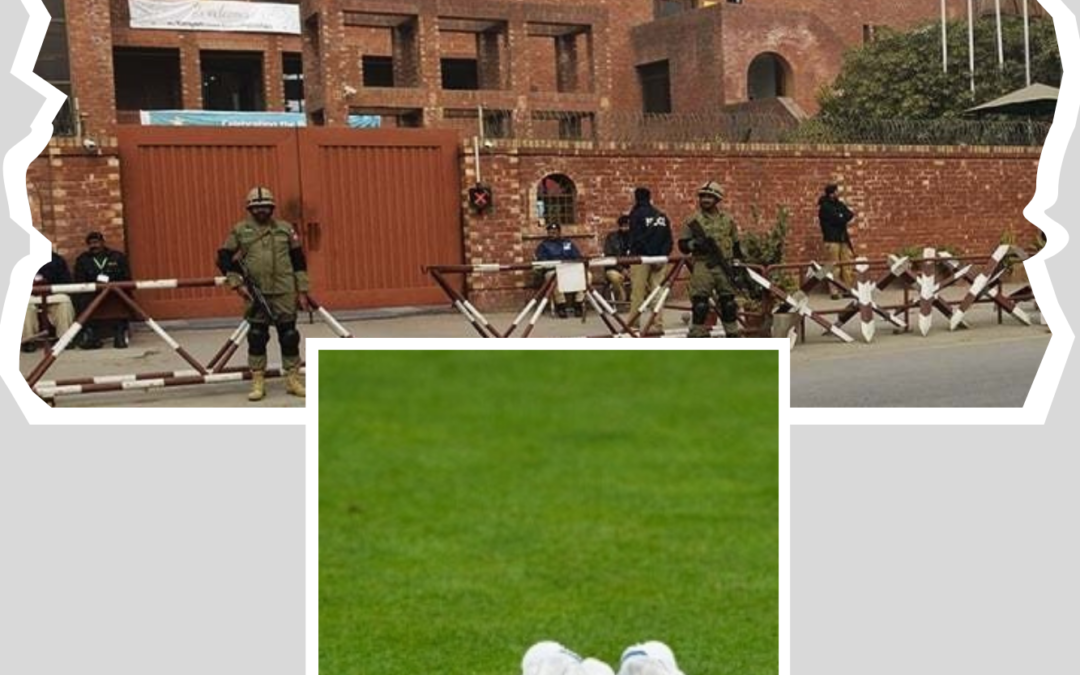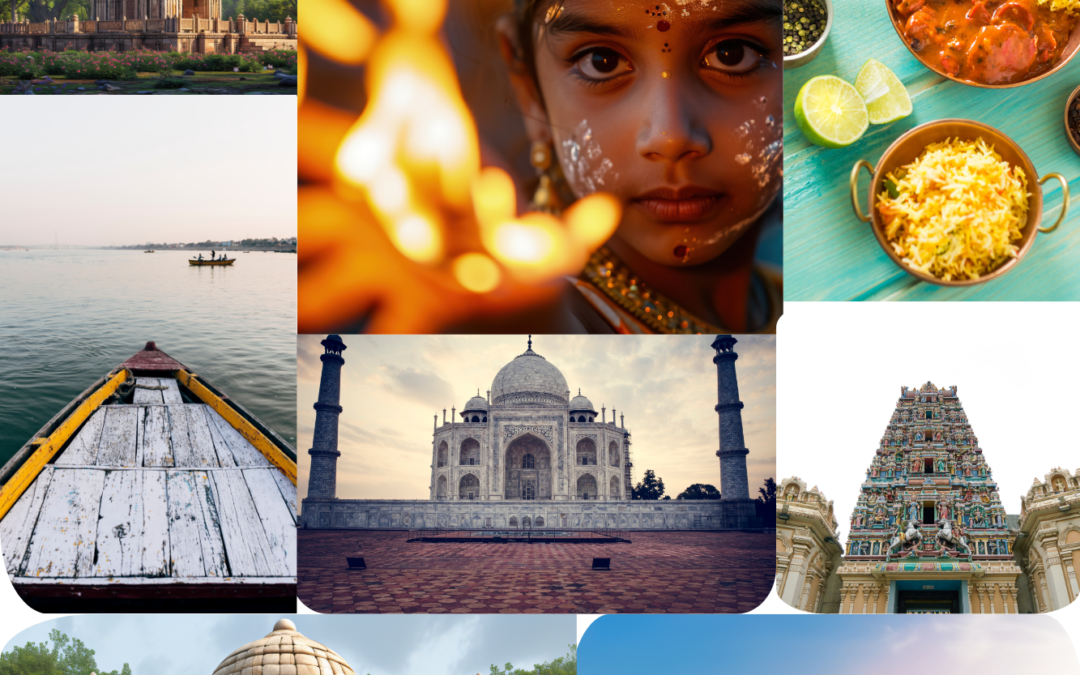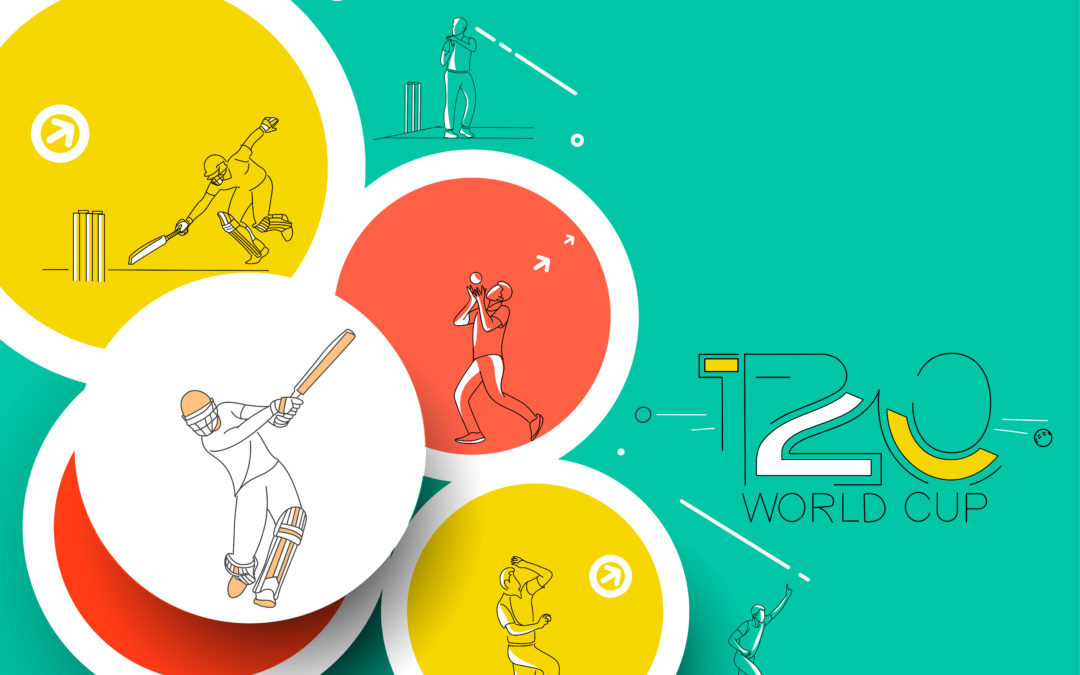
by fyAdmin | Jul 13, 2024 | Sports
Pakistan’s cricket, once a formidable force in the international arena, has faced a steady decline in recent years. The reasons behind this deterioration are multi-faceted, ranging from administrative mismanagement to player attitudes and media influence. This analysis delves into the core issues plaguing Pakistan cricket, examining the roles of the Pakistan Cricket Board (PCB), the selection committee, players, media, and systemic trust and fitness issues. It also explores the repercussions of frequent dramatic changes post-ICC events and the internal clashes that exacerbate these problems.
Mismanagement by the Pakistan Cricket Board (PCB)
The PCB, the governing body of cricket in Pakistan, has often been criticized for its inefficiency and mismanagement. The board’s interference during matches, such as dictating batting orders and deciding who bowls in crucial moments, undermines the autonomy of the captain and coach, leading to confusion and a lack of cohesive strategy. Comments made by PCB officials during major series or events like the World Cup can demoralize players and create unnecessary pressure. This top-down interference disrupts the team’s dynamics and hampers performance on the field.
Selection Committee Interference
The selection committee’s undue influence extends into the gameplay itself. Selectors sometimes make on-field decisions, such as determining the batting order or choosing who bowls in a super over. This micromanagement not only undermines the captain and coach but also creates an environment where players are unsure of their roles and responsibilities. Additionally, the selection of players based on regional biases, personal connections, or favoritism over meritocracy leads to a lack of trust and cohesion within the team. Such practices result in talented players being overlooked, causing a decline in overall team performance.
Player Attitudes and Commitment
Player attitudes also contribute significantly to the issues faced by Pakistan cricket. Instances of players missing training sessions, displaying overconfidence, and prioritizing personal statistics over team success have been reported. These behaviors indicate a lack of professionalism and a disregard for team goals. Furthermore, strained relationships among team members can lead to a fragmented unit, incapable of performing as a cohesive team. The emphasis on individual achievements rather than collective success erodes the spirit of teamwork essential for winning matches.
Media’s Role
The media in Pakistan plays a dual role in both promoting and undermining cricket. While constructive criticism is necessary, excessive and often unfounded criticism can demoralize players and create a hostile environment. Media outlets frequently focus on players’ personal lives and statistics, rather than providing balanced coverage of their on-field performance. This relentless scrutiny can lead to players feeling pressured and distracted, ultimately affecting their performance. In some instances, there have been accusations of media personnel taking advantage of situations to gain benefits, further complicating the players’ mental state.
Systemic Trust Issues
Trust issues pervade all levels of Pakistan cricket, from players to board members. There is a pervasive lack of trust in the capabilities and intentions of various stakeholders, whether it be players not trusting their coaches, board members doubting the commitment of players, or selectors questioning the decisions of the captain. This lack of trust leads to a dysfunctional environment where decisions are second-guessed, and unity is compromised. The reluctance to trust former players for coaching roles further exacerbates this issue, as experienced individuals who understand the nuances of Pakistani cricket are sidelined.
Fitness and Mental Preparedness
Fitness and mental preparedness are critical aspects of modern cricket, and Pakistan has often lagged in these areas. Players not maintaining peak physical condition or being mentally unprepared for high-stakes matches results in underperformance. Fitness issues can lead to injuries, reducing the team’s strength, while a lack of mental resilience can cause players to crumble under pressure. The absence of a comprehensive support system to address these aspects leaves the team vulnerable in crucial moments.
Frequent Dramatic Changes
One of the most visible issues in Pakistan cricket is the frequent and dramatic changes that occur after significant losses in ICC events. These changes include the replacement of board members, selection committee personnel, the captain, and even key players. Such upheavals create instability and prevent the development of a consistent and coherent strategy. Constantly changing leadership and team composition hinder the building of team chemistry and long-term planning. This reactive approach, rather than a proactive one, ensures that the team is always in a state of flux, unable to develop a stable and successful framework.
Internal Clashes: Board Members, Team Members, Selection Committee, and Former Players
Internal clashes among board members, team members, the selection committee, and former players further aggravate the decline of Pakistan cricket. Power struggles within the PCB lead to inconsistent policies and frequent leadership changes, disrupting the team’s stability. Conflicts between players and management create a toxic environment, affecting team morale and performance. The selection committee’s disagreements with the captain and coach over team composition and strategies result in a lack of unified direction. Additionally, the sidelining of former players, who possess valuable experience and insights, deprives the team of essential mentorship and guidance.
Conclusion
The decline of Pakistan cricket can be attributed to a complex interplay of factors involving mismanagement by the PCB, undue interference by the selection committee, unprofessional attitudes of players, negative media influence, systemic trust issues, and inadequate attention to fitness and mental preparedness. Frequent dramatic changes following major losses and internal clashes among stakeholders only add to the instability and hinder the development of a cohesive and successful team.
Addressing these issues requires a comprehensive overhaul of the entire system. The PCB must adopt a more hands-off approach, allowing the captain and coach to make on-field decisions. The selection committee should prioritize merit over personal biases and regionalism. Players need to embrace a more professional attitude, focusing on team success rather than individual statistics. The media should aim for balanced reporting, providing constructive criticism without undermining players’ confidence. Building trust at all levels is essential, and former players with valuable experience should be integrated into coaching roles. Lastly, a focus on fitness and mental preparedness is crucial for developing a resilient team.
Only through systemic changes and a commitment to long-term stability can Pakistan cricket hope to reclaim its former glory on the international stage.
For more information on the decline of Pakistan cricket, you can explore resources such as the Pakistan Cricket Board’s official website, historical accounts of Pakistan cricket, and recent updates from platforms like ESPNcricinfo.com , Recent news on Pakistan cricket

by fyAdmin | Jul 12, 2024 | Travel
India, a land of stunning diversity and rich cultural heritage, invites you to explore its vibrant cities, each with its own unique charm and history. Whether you’re captivated by bustling metropolises, serene lakes, or ancient spiritual hubs, India’s cities offer unforgettable experiences. Here’s a detailed guide to some of the top cities you must visit in India, along with culinary delights and travel tips.
Delhi: The Historical Heartbeat
Overview: As the capital city of India, Delhi seamlessly blends ancient history with modern vibrancy. Its streets are a living museum, showcasing the grandeur of the past alongside contemporary culture.
Must-Visit Sites:
– Red Fort: A UNESCO World Heritage Site, this 17th-century fort symbolizes the might of Mughal architecture.
– Qutub Minar: Another UNESCO site, this towering minaret stands as a testament to Delhi’s medieval history.
– India Gate: A war memorial that offers a tranquil spot for evening walks and picnics.
Culinary Delights:
– Street Food: Try chaats, golgappas, and paranthas at Chandni Chowk.
– Mughlai Cuisine: Enjoy kebabs, biryanis, and butter chicken at Karim’s near Jama Masjid.
Travel Tips:
– Transport: Use the Delhi Metro for efficient travel.
– Safety: Be cautious of pickpockets in crowded areas.
Mumbai: The City of Dreams
Overview: Mumbai is the financial powerhouse of India, known for its fast-paced life, Bollywood glamour, and colonial-era architecture.
Must-Visit Sites:
– Gateway of India: An iconic arch monument facing the Arabian Sea.
– Marine Drive: A scenic boulevard perfect for evening strolls with views of the skyline.
– Elephanta Caves: Rock-cut cave temples located on Elephanta Island, a short ferry ride from the city.
Culinary Delights:
– Street Food: Savor vada pav, pav bhaji, and bhel puri at Juhu Beach and Girgaum Chowpatty.
– Seafood: Enjoy fresh seafood dishes at Mahesh Lunch Home or Trishna.
Travel Tips:
– Transport: Local trains are the lifeline of Mumbai but avoid peak hours.
– Monsoon: Be prepared for heavy rains if visiting between June and September.
Jaipur: The Pink City
Overview: Jaipur, part of the Golden Triangle tourist circuit, is renowned for its magnificent palaces, forts, and vibrant markets.
Must-Visit Sites:
– Amer Fort: A majestic fort with intricate carvings and expansive courtyards.
– City Palace: A royal residence with museums showcasing artifacts from Rajasthan’s royal heritage.
– Hawa Mahal: A unique five-story palace with a façade of 953 small windows.
Culinary Delights:
– Rajasthani Thali: Sample dal baati churma, gatte ki sabzi, and laal maas at traditional eateries like Chokhi Dhani.
– Sweets: Indulge in ghewar and mawa kachori from LMB (Laxmi Misthan Bhandar).
Travel Tips:
– Shopping: Visit Johari Bazaar and Bapu Bazaar for jewelry, textiles, and handicrafts.
– Weather: The best time to visit is between October and March to avoid the scorching summer heat.
Agra: The City of the Taj Mahal
Overview: Agra is synonymous with the Taj Mahal, but this city offers much more, including other Mughal-era monuments and a rich history.
Must-Visit Sites:
– Taj Mahal: This white marble mausoleum is one of the Seven Wonders of the World.
– Agra Fort: A UNESCO World Heritage site with impressive red sandstone architecture.
– Fatehpur Sikri: An ancient city and former Mughal capital with stunning buildings and palaces.
Culinary Delights:
– Mughlai Cuisine: Relish petha (a sweet made from ash gourd) and Mughlai dishes at Pinch of Spice.
– Street Food: Try bedai (spicy stuffed bread) and jalebi from local vendors.
Travel Tips:
– Timings: Visit the Taj Mahal at sunrise for fewer crowds and stunning views.
– Tickets: Secure your tickets online to bypass lengthy queues.
Varanasi: The Spiritual Capital
Overview: Varanasi is one of the oldest living cities in the world, revered for its spiritual significance and ancient ghats along the Ganges River.
Must-Visit Sites:
– Ghats: Witness the daily rituals and ceremonies at Dashashwamedh Ghat and Assi Ghat.
– Kashi Vishwanath Temple: A Revered Sanctuary Dedicated to Lord Shiva, Steeped in Ancient Hindu Spirituality.
– Sarnath: A short drive away, this is where Buddha delivered his first sermon.
Culinary Delights:
– Street Food: Savor kachori sabzi, chaat, and lassi from the local stalls.
– Banarasi Paan: Try this famous post-meal treat made with betel leaf.
Travel Tips:
– Boating: Take a sunrise or sunset boat ride on the Ganges for a serene experience.
– Respect: Dress modestly and respect local customs, especially around the ghats.
Kolkata: The Cultural Hub
Overview: Known for its colonial architecture, literary heritage, and vibrant festivals, Kolkata is the cultural heart of India.
Must-Visit Sites:
– Howrah Bridge: A cantilever bridge that is an engineering marvel.
– Victoria Memorial: A grand marble building that houses a museum.
– Dakshineswar Kali Temple: A significant religious site dedicated to Goddess Kali.
Culinary Delights:
– Bengali Cuisine: Enjoy fish curry (macher jhol), roshogolla, and sandesh at restaurants like Oh! Calcutta.
– Street Food: Try puchkas (pani puri), jhal muri, and kati rolls.
Travel Tips:
– Festivals: Visit during Durga Puja to witness the city in its full festive glory.
– Transport: Use the Kolkata Metro and trams for an authentic experience.
Bangalore: The Silicon Valley of India
Overview: Bangalore, or Bengaluru, is known for its tech industry, pleasant climate, and bustling nightlife.
Must-Visit Sites:
– Lalbagh Botanical Garden: A sprawling garden with a wide variety of flora.
– Bangalore Palace: A Tudor-style palace offering a glimpse into royal life.
– Nandi Hills: A popular spot for a weekend getaway with stunning sunrise views.
Culinary Delights:
– South Indian Cuisine: Relish dosas, idlis, and filter coffee at MTR (Mavalli Tiffin Rooms) or Vidyarthi Bhavan.
– Microbreweries: Bangalore is famous for its craft beers; visit Toit or Arbor Brewing Company.
Travel Tips:
– Traffic: Plan your travel to avoid peak traffic hours.
– Weather: The weather is pleasant year-round, but October to February is ideal for outdoor activities.
Hyderabad: The City of Pearls
Overview: Hyderabad offers a rich tapestry of history, technology, and culinary delights, with its blend of old-world charm and modernity.
Must-Visit Sites:
– Charminar: An iconic 16th-century mosque and landmark.
– Golconda Fort: A historic fort known for its acoustics and grand architecture.
– Hussain Sagar Lake: A heart-shaped lake with a large Buddha statue in the center.
Culinary Delights:
– Hyderabadi Biryani: A must-try at Paradise or Bawarchi.
– Irani Chai and Osmania Biscuits: Enjoy this traditional tea and biscuits at any local Irani café.
Travel Tips:
– Shopping: Visit Laad Bazaar for bangles and pearls.
– Climate: The best time to visit is from October to March to avoid the summer heat.
Chennai: The Gateway to South India
Overview: Chennai, with its sandy beaches, classical music scene, and ancient temples, is a blend of tradition and modernity.
Must-Visit Sites:
– Marina Beach: India’s Largest Natural Urban Stretch of Sandy Splendor.
– Kapaleeshwarar Temple: A Dravidian-style temple dedicated to Lord Shiva.
– Fort St. George: The first English fortress in India, now housing a museum.
Culinary Delights:
– South Indian Cuisine: Enjoy idli, dosa, and sambar at Saravana Bhavan or Murugan Idli Shop.
– Chettinad Cuisine: Try spicy Chettinad chicken and other local delicacies.
Travel Tips:
– Language: Tamil is the primary language, but English is widely understood.
– Weather: The best time to visit is between November and February to avoid the hot and humid climate.
Udaipur: The City of Lakes
Overview: Udaipur, known as the “Venice of the East,” is famed for its scenic lakes, grand palaces, and romantic ambiance.
Must-Visit Sites:
– City Palace: Overlooking Lake Pichola, featuring Rajput architecture and a museum.
– Lake Pichola: Offers stunning views, especially during a boat ride at sunset.
– Jag Mandir: An island palace known for its intricate carvings and gardens.
– Saheliyon Ki Bari: A serene garden with fountains and marble sculptures.
Culinary Delights:
– Dal Baati Churma: A traditional Rajasthani dish available at Krishna Dal Bati Restro.
– Laal Maas: Spicy meat curry best at Ambrai or Jagat Niwas Palace.
– Street Food: Try kachoris, mirchi vada, and sweets like ghewar and mawa kachori.
Travel Tips:
– Best Time: Visit between September and March for pleasant weather.
– Shopping: Explore Hathi Pol Bazaar and Bada Bazaar for handicrafts and textiles.

by fyAdmin | Jul 3, 2024 | Education
Artificial Intelligence (AI) is the technology that enables machines to simulate human intelligence by perceiving their environment, understanding context, reasoning through data, and making decisions to achieve specific goals. It encompasses a broad range of techniques and applications, from voice recognition and autonomous vehicles to medical diagnostics and language translation.
Artificial intelligence (AI) can be both a boon and a bane. As a boon, AI improves efficiency, advances healthcare, and offers valuable insights. As a bane, it can lead to job losses, privacy issues, and ethical dilemmas. Balancing these benefits and challenges is crucial.
Artificial Intelligence (AI) offers a host of advantages:
- Automation: AI takes care of repetitive tasks automatically, saving us time and effort.
- Accuracy: It excels at tasks, ensuring fewer errors compared to human performance.
- Always On: AI systems work around the clock without needing breaks, ensuring tasks get done whenever needed.
- Smarter Decision-Making: AI quickly analyzes large amounts of data, providing insights that lead to better decisions across various fields.
- Driving Innovation: AI fuels innovation by enabling the creation of new technologies and tools that boost productivity and efficiency in industries.
- Enhanced Safety: AI can handle dangerous tasks, keeping humans out of harm’s way in risky environments.
- Personalized Experiences: AI tailors services to our individual preferences, enhancing satisfaction and making interactions smoother and more enjoyable.
These advantages highlight how AI not only makes our lives easier and safer but also drives progress and improves how we experience technology in everyday life.
We are gaining knowledge effortlessly while sitting in our rooms, thanks to AI.
Artificial Intelligence (AI) offers numerous benefits but also presents a range of challenges and potential issues:
- Job Losses: AI and automation can lead to job displacement as machines and software take over tasks traditionally performed by humans, particularly in manufacturing and routine office work.
- Privacy Concerns: AI systems often require vast amounts of personal data to function effectively, leading to concerns about data collection practices, data security, and potential misuse of sensitive information.
- Bias in Decisions: AI algorithms can inherit and amplify biases present in the data they are trained on, resulting in unfair or discriminatory outcomes in areas like hiring, lending, and law enforcement.
- Complexity and Cost: Developing, implementing, and maintaining AI systems is often complex and expensive, demanding specialized expertise, substantial financial investment, and ongoing maintenance.
- Ethical Dilemmas: The rise of AI brings ethical questions about accountability and responsibility, particularly when it comes to decisions made by autonomous systems in critical sectors like healthcare, criminal justice, and military operations.
- Dependency Risks: Increasing reliance on AI poses risks if systems fail or are compromised, potentially causing significant disruptions in everything from daily operations to critical infrastructure.
- Social Inequality: The benefits of AI may not be evenly distributed, potentially exacerbating social and economic inequalities if access to AI technology and its advantages are limited to certain groups or regions.
- Transparency Issues: Many AI systems operate as “black boxes,” making it difficult to understand how they reach certain decisions. The absence of transparency can undermine both accountability and trust.
These challenges underscore the importance of developing and deploying AI responsibly. Balancing innovation with careful consideration of ethical, social, and economic impacts is crucial to ensure that AI serves the broader good while mitigating its potential downsides.
Summary
Artificial Intelligence (AI) mimics human intelligence to automate tasks, enhance accuracy, and drive innovation. It saves time and offers personalized experiences but also brings challenges like job losses, privacy concerns, and ethical issues. The complexity and cost of AI systems, along with the risk of exacerbating social inequalities, highlight the importance of responsible development and use. Balancing these factors ensures AI benefits everyone fairly and maintains a positive impact on society.
For professionals and enthusiasts in the field of artificial intelligence and data science, NVIDIA offers cutting-edge solutions and resources. Their platform provides tools and technologies that drive innovation in AI research and applications.

by fyAdmin | May 15, 2024 | Sports
The T20 Cricket World Cup is organized by the International Cricket Council (ICC) every two years, except in the event of an ICC Cricket World Cup (50 Overs) being scheduled in the same year; in that scenario, it will be held a year before. It began in 2007, and to date, eight successful editions have been completed. This year marks the 9th edition of the ICC Men’s T20 Cricket World Cup, 2024, hosted by the West Indies and the United States from June 1st. It is the first time the United States is hosting any Cricket World Cup in history. The Indian legend Yuvraj Singh has been named the Brand Ambassador for the ICC Men’s T20 World Cup 2024.
Twenty teams are participating in this ICC Men’s T20 Cricket World Cup, 2024. These teams are divided into 4 groups, with 5 teams in each group. The top 2 teams from each group will qualify for the super eight.
T20 Cricket World Cup Groups:
Group A: India, Pakistan, Ireland, Canada, The USA
Group B: England, Australia, Namibia, Oman, Scotland
Group C: West Indies, New Zealand, Afghanistan, Uganda, Papua New Guinea
Group D: South Africa, Sri Lanka, Bangladesh, Netherlands, Nepal
Winner of T20 World Cup, 2022
England emerged as the new champion of the T20 Cricket World Cup after defeating Pakistan by 5 wickets in the final held at Melbourne, Australia. England and Pakistan reached the final after defeating India and New Zealand in the semifinals respectively.

India squad for Men’s T20 World Cup 2024:
India has announced its squad of 15 players for the ICC Men’s T20 World Cup 2024
Rohit Sharma has been chosen to lead India’s cricket team in the ICC Men’s T20 World Cup 2024. He’ll be guiding the team in their quest for victory in the tournament.
- Opener & Middle Order Batsmen: Rohit Sharma (C), Yashasvi Jaiswal, Virat Kohli, Suryakumar Yadav
- Wicket Keepers: Rishabh Pant (wk), Sanju Samson (wk)
- All Rounders: Hardik Pandya (VC), Shivam Dube, Ravindra Jadeja, Axar Patel
- Bowlers: Kuldeep Yadav, Yuzvendra Chahal, Arshdeep Singh, Jasprit Bumrah, and Mohd. Siraj
Reserve Players:
- Batsmen: Shubman Gill, Rinku Singh,
- Bowler: Khaleel Ahmed and Avesh Khan
As we look forward to the ICC Men’s T20 World Cup 2024, some teams have shown who will play, but others haven’t said yet. Fans everywhere are excited to see which players will represent those teams. Everyone is counting down to when the matches start, eager to see the teams compete and show off their skills to win big in cricket.
India Vs. Pakistan Clash
The India vs. Pakistan match on June 9 is eagerly anticipated by everyone, and it’s expected to attract a huge audience, creating history once again in terms of viewership. Looking at the stats, India has consistently outperformed Pakistan in World Cup matches, which adds even more excitement to this upcoming clash. Fans from both countries will be on the edge of their seats, eagerly watching as their teams compete for victory on the cricket field. It’s a rivalry that always sparks intense emotions and unforgettable moments, and this match is sure to be no different. The anticipation is palpable as cricket enthusiasts eagerly await this epic showdown between two cricketing giants.
List of Winning T20 World Cup Team
| Year |
Winner |
Runner Up |
Host Nation(s) |
Player of the Series |
| 2007 |
India |
Pakistan |
South Africa |
Shahid Afridi |
| 2009 |
Pakistan |
Sri Lanka |
England |
Tillakaratne Dilshan |
| 2010 |
England |
Australia |
West Indies |
Kevin Pietersen |
| 2012 |
West Indies |
Sri Lanka |
Sri Lanka |
Shane Watson |
| 2014 |
Sri Lanka |
India |
Bangladesh |
Virat Kohli |
| 2016 |
West Indies |
England |
India |
Virat Kohli |
| 2021 |
Australia |
New Zealand |
UAE/Oman |
Mitchell Marsh |
| 2022 |
England |
Pakistan |
Australia |
Sam Curran |
| 2024 |
India |
South Africa |
West Indies & USA |
Jasprit Bumrah |

by fyAdmin | May 4, 2024 | Health
Why Yoga?
Yoga gives us a better life by keeping us mentally and physically healthy and wealthy. It is believed that eternal satisfaction can only be achieved when your body, mind, and your heart feel peace. It is believed that Yoga serves as a medium for maintaining peace in the body, heart, and mind. Yoga is not just an exercise; it is a culture continuously adopted by human beings. It is a fusion of physical postures, meditation, breathing techniques and ethical principles.
History of Yoga
The term “Yoga” comes from the Sanskrit word “yuj,” meaning “to unite” or “to connect”. It was started Thousands of years ago. We mark International Yoga Day on June 21st each year. Yoga’s science began ages ago, before religions were born. In yogic tales, Lord Shiva is hailed as the first yogi and guru, known as Adiyogi or Adi Guru.
Benefits of Yoga
Yoga possesses the power to connect you with yourself from within. Some benefits of Yoga are:
- Flexible: It helps in making our body more flexible. Flexibility helps in free body movement. It also prevents us from joint pain, shoulder pain etc.
- Concentration: Having a concentrated mind always makes us focus towards our goal. It also develops our deep-thinking capability which helps us in our day-to-day life.
- Calmness: Yoga teaches us how to keep ourselves calm and robust. Calmness gives us inner peace whereas robustness makes us physically stronger and active.
- Health: Nowadays good health is a big challenge for all of us. Yoga helps us in building our mental as well as physical health. As we know that healthy mind always thinks positive.Obesity & Diabetes are very common health issue today’s, Yoga helps us in keeping the disease away from us. Person who are suffering from Obesity and Diabetes can reduce by doing Yoga.
- Deep Thinking: A person can only concentrate or deep think when he/she has free calm mind. Yoga helps us in keeping the mind relaxed and calm. Deep thinking is only possible when our mind is conscious, Yoga helps us in keeping our mind conscious and active.
- Happiness: Inner happiness is very rare to find in today’s world. People are happy from outside; we can see smiles on their face but are they really happy from inside?
Happiness is most important part of our life. People can only be happy when feels from inside. Inner happiness can be achieved when your mind and soul both are healthy, relaxed and calm. Yoga helps us in keeping our body, mind, soul pure. As we know that pure (healthy) mind and soul always gives us peace and when we feel peace we feel inner happiness.

Types of Yoga
Hatha Yoga: It is a simple yoga style where you do poses and breathe to feel balanced and calm. Holding poses helps stretch your body and relax your mind. It’s good for anyone and makes you feel healthier and more peaceful.
Vinyasa Yoga: It is a dynamic form of yoga that synchronizes movement with breath. It involves smoothly transitioning between poses in a flowing sequence. The practice emphasizes the connection between breath and movement to create a meditative flow.
Iyengar Yoga: It is about getting your body right with blocks and straps. It helps you stay patient and focused and keeps your mind clear. It’s all about being precise and using props to help you stay aligned.
Kundalini Yoga: It is spiritual and aims to awaken energy at the base of your spine. You do chanting, meditation, and certain poses to feel more aware and peaceful inside.
Bikram Yoga: It is done in a hot room with 26 poses to detox your body. Though it is challenging but makes you stronger mentally and more determined.
Ashtanga Yoga: It is a tough kind of yoga with a set order of poses. You move with your breath to build strength and flexibility. It helps you focus and feel strong and calm.
Restorative Yoga: It is a peaceful type of yoga where you use props like blankets and pillows to relax in gentle poses. It helps you unwind, release stress, and feel refreshed.
Yin Yoga: It is a slow kind of yoga where you hold poses for a few minutes. It stretches your muscles and helps you relax deeply.
Anusara Yoga: It is a type of yoga that’s about alignment and feeling positive. It helps you open your heart and feel connected to yourself and others. In class, you might do fun sequences and think about uplifting ideas.
Prenatal Yoga: It is a gentle exercise for pregnant women. It helps strengthen your body, ease discomfort, and prepare for childbirth. You also learn breathing and relaxation to feel better during pregnancy.
Add Yoga as a need of Life.
When discussing the benefits of meditation, it’s essential to consider the extensive research and authoritative insights available. For example, the Mayo Clinic offers valuable information on how meditation can reduce stress, promote emotional health, and enhance self-awareness.







